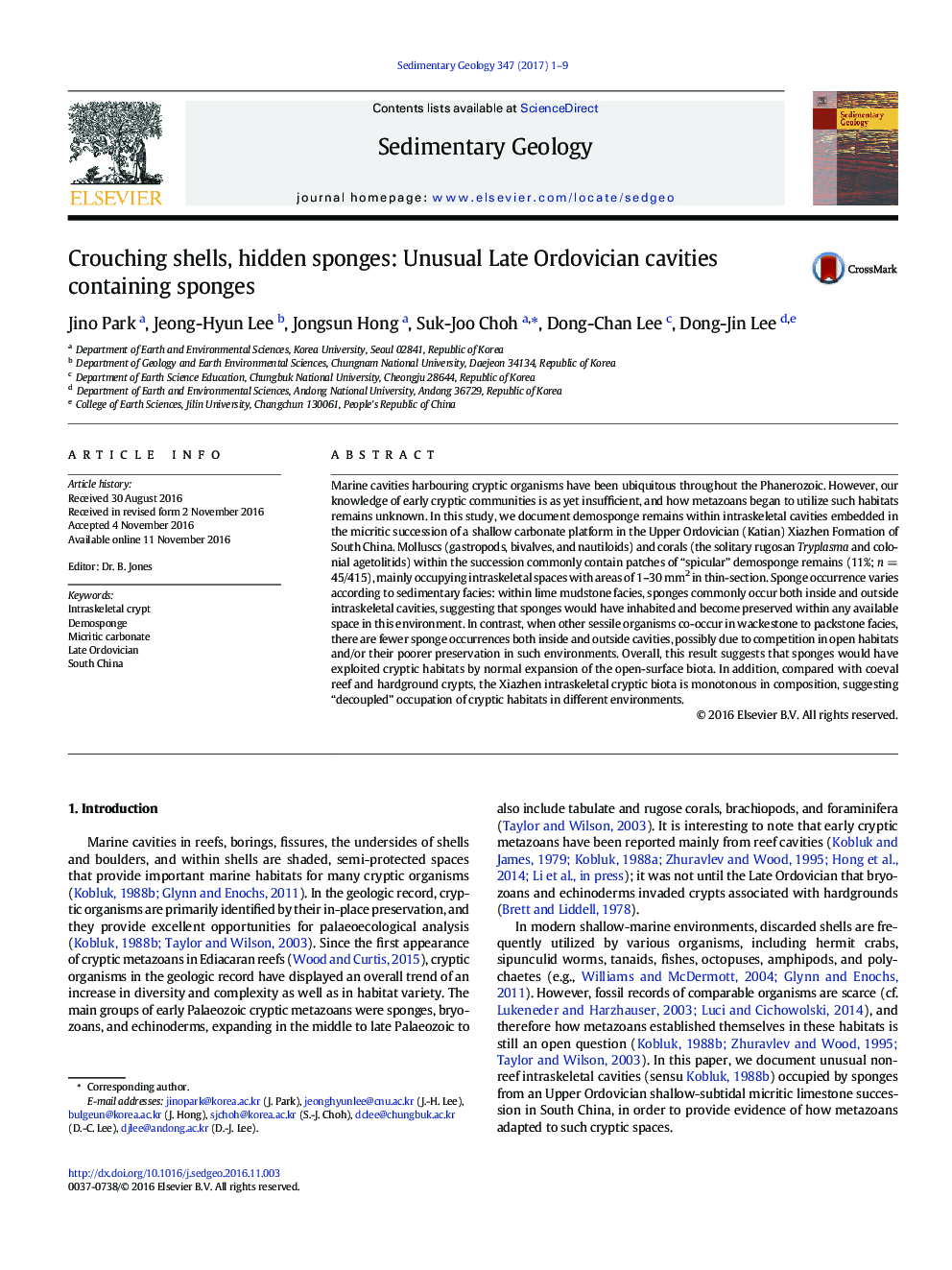| Article ID | Journal | Published Year | Pages | File Type |
|---|---|---|---|---|
| 5781323 | Sedimentary Geology | 2017 | 9 Pages |
Abstract
Marine cavities harbouring cryptic organisms have been ubiquitous throughout the Phanerozoic. However, our knowledge of early cryptic communities is as yet insufficient, and how metazoans began to utilize such habitats remains unknown. In this study, we document demosponge remains within intraskeletal cavities embedded in the micritic succession of a shallow carbonate platform in the Upper Ordovician (Katian) Xiazhen Formation of South China. Molluscs (gastropods, bivalves, and nautiloids) and corals (the solitary rugosan Tryplasma and colonial agetolitids) within the succession commonly contain patches of “spicular” demosponge remains (11%; n = 45/415), mainly occupying intraskeletal spaces with areas of 1-30 mm2 in thin-section. Sponge occurrence varies according to sedimentary facies: within lime mudstone facies, sponges commonly occur both inside and outside intraskeletal cavities, suggesting that sponges would have inhabited and become preserved within any available space in this environment. In contrast, when other sessile organisms co-occur in wackestone to packstone facies, there are fewer sponge occurrences both inside and outside cavities, possibly due to competition in open habitats and/or their poorer preservation in such environments. Overall, this result suggests that sponges would have exploited cryptic habitats by normal expansion of the open-surface biota. In addition, compared with coeval reef and hardground crypts, the Xiazhen intraskeletal cryptic biota is monotonous in composition, suggesting “decoupled” occupation of cryptic habitats in different environments.
Keywords
Related Topics
Physical Sciences and Engineering
Earth and Planetary Sciences
Earth-Surface Processes
Authors
Jino Park, Jeong-Hyun Lee, Jongsun Hong, Suk-Joo Choh, Dong-Chan Lee, Dong-Jin Lee,
